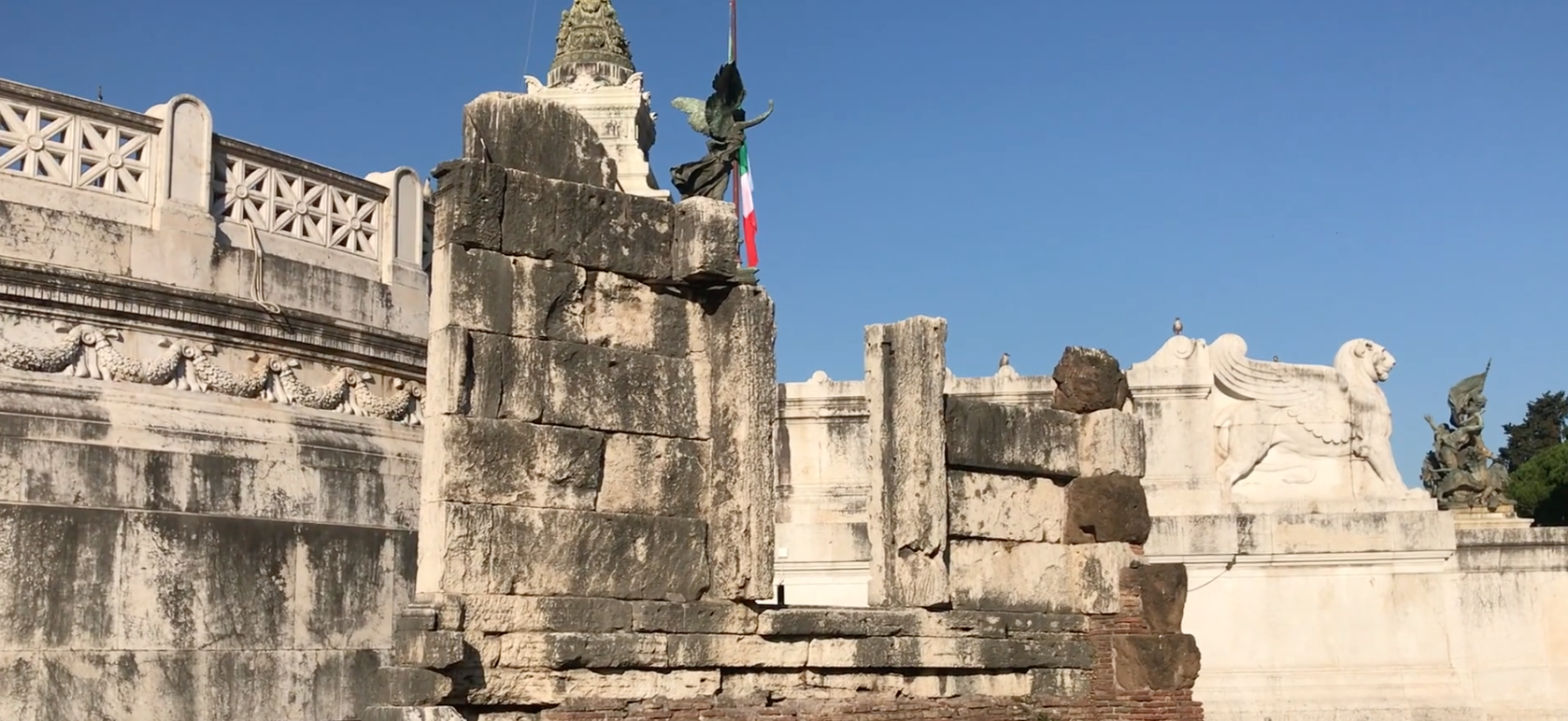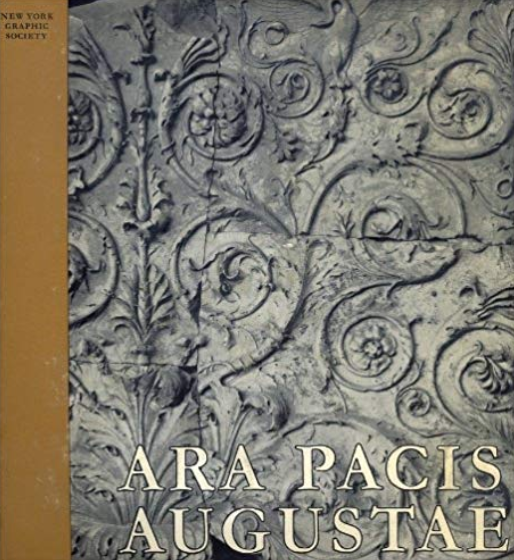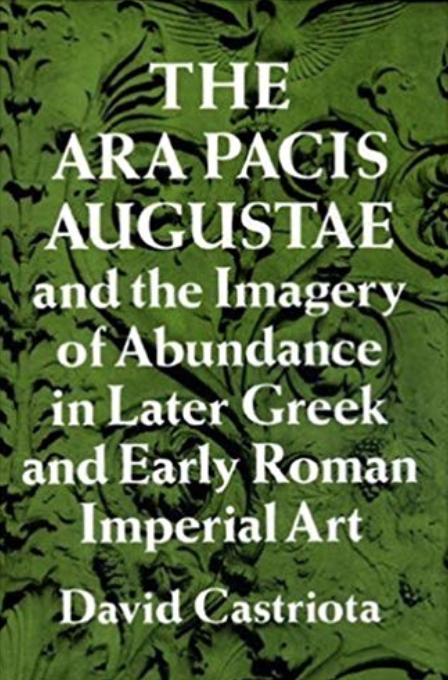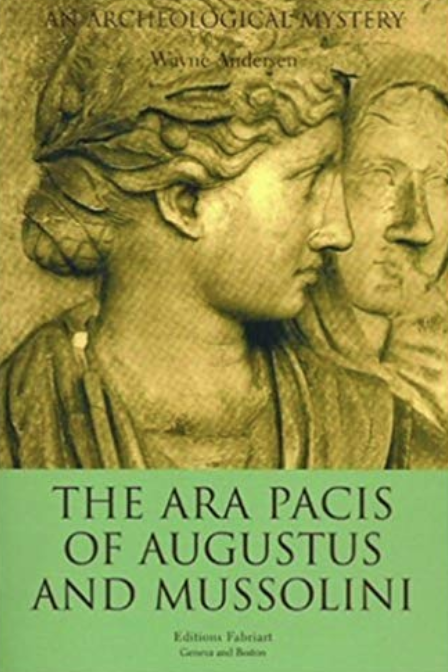Start with our video overview:
Mostly forgotten or ignored by the millions of passerby on their way to Piazza Venezia or the Colosseum this rare Republican tomb is visible to all, with its original inscription, at the base of the Capitoline Hill. The tomb is of C. Publicius Bibulus, who was a plebeian aedile circa 100 BC. The Senate allowed him the rare honor of being buried inside the pomerium (CIL VI.139). The structure is composed of travertine and tuff stone, almost 5 meters by 6.5 meters. The central niche was for a statue, and the frieze decoration preserved contains garlands and bucrania. The inscription appears on two sides.
Explore further:
The tomb of C. Publicius Bibulus, a plebeian aedile, erected (or very likely restored: see CP 1924, 78) in the last century of the republic by decree of the senate (CIL vi. 139 =12. 834) at the base of the Capitoline hill, on the east side of the via Flaminia, about 100 metres north of the probable site of the porta Fontinalis. It was a rectangular structure of travertine, and tufa where the stone was not visible, consisting of a stereobate and upper portion. The facade (the south-west side), together with the beginning of the south-east side, is still preserved. Its stereobate is 4.76 metres high and 6.50 wide, and above this are four Tuscan pilasters with a fragment of the entablature. The central space between the pilasters was probably a niche for a statue; the side spaces were closed and had projecting tablets for inscriptions. The frieze was decorated with garlands, rosettes and ox-skulls. The inscription was cut on the two upper courses of the stereobate and repeated on at least two sides (for full description, see Phil. 1867, 82-91; especially Delbrueck, Hellenist. Bauten ii. 1912, 37-41, and literature cited; Jord. i. I. 207; HJ491; NS 1907, 411-414; TF 144).
This content is brought to you by The American Institute for Roman Culture, a 501(C)3 US Non-Profit Organization.
Please support our mission to aid learning and understanding of ancient Rome through free-to-access content by donating today.
Cite This Page
Cite this page as: Darius Arya, The American Institute for Roman Culture, “Tomb of Bibulus” Ancient Rome Live. Last modified 17/01/2021. https://ancientromelive.org/tomb-of-bibulus
License
Created by The American Institute of Roman Culture, published on 12/21/2019 under the following license: Creative Commons: Attribution-NonCommercial-ShareAlike. This license lets others remix, tweak, and build upon this content non-commercially, as long as they credit the author and license their new creations under the identical terms. Please note that content linked from this page may have different licensing terms.
This content is brought to you by The American Institute for Roman Culture, a 501(C)3 US Non-Profit Organization.
Please support our mission to aid learning and understanding of ancient Rome through free-to-access content by donating today.
Ara Pacis Augustae Hardcover – 1968
The Ara Pacis Augustae and the Imagery of Abundance in Later Greek and Early Roman Imperial Art Hardcover – May 26, 1995
The Ara Pacis of Augustus and Mussolini Paperback – April 1, 2003
Cite This Page
Cite this page as: Darius Arya, The American Institute for Roman Culture, “Ara Pacis Augustae” Ancient Rome Live. Last modified 10/24/2019. https://ancientromelive.org/ara-pacis-augustae/
License
Created by The American Institute of Roman Culture, published on 01/17/2021 under the following license: Creative Commons: Attribution-NonCommercial-ShareAlike. This license lets others remix, tweak, and build upon this content non-commercially, as long as they credit the author and license their new creations under the identical terms. Please note that content linked from this page may have different licensing terms.






